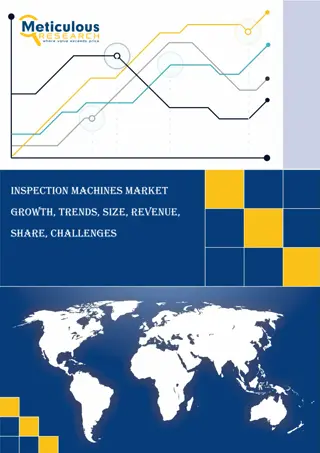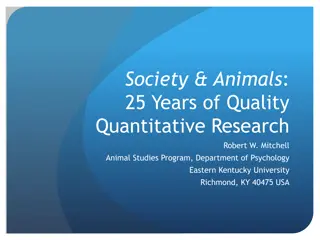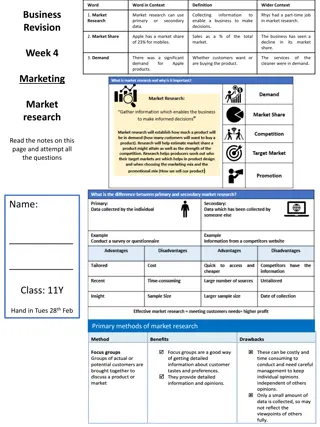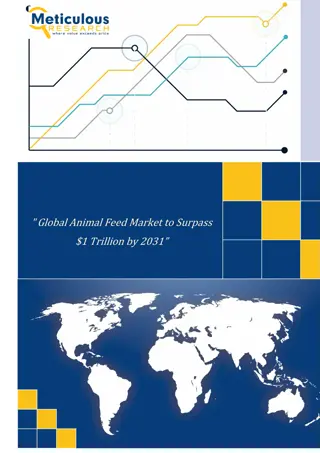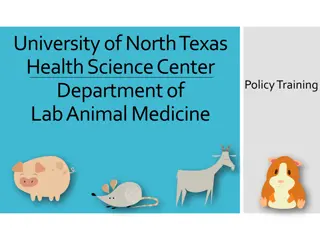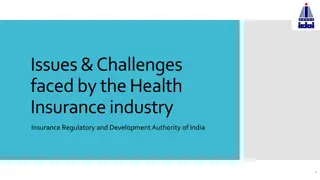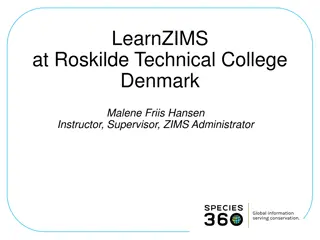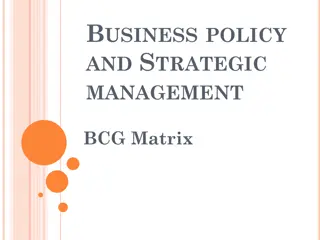Insights into the U.S. Animal Health Industry: Market Overview & Trends
Explore the U.S. Animal Health Industry through an informative briefing covering the Animal Health Institute, industry goals, market shares, species demographics, and emerging trends in parasiticides. Discover the market landscape, demographic insights, and future outlook of the industry.
Download Presentation

Please find below an Image/Link to download the presentation.
The content on the website is provided AS IS for your information and personal use only. It may not be sold, licensed, or shared on other websites without obtaining consent from the author.If you encounter any issues during the download, it is possible that the publisher has removed the file from their server.
You are allowed to download the files provided on this website for personal or commercial use, subject to the condition that they are used lawfully. All files are the property of their respective owners.
The content on the website is provided AS IS for your information and personal use only. It may not be sold, licensed, or shared on other websites without obtaining consent from the author.
E N D
Presentation Transcript
EPA Industry Briefing US ANIMAL HEALTH INDUSTRY
Animal Health Industry: What do we do? The goal of industry is to improve the health and well-being of animals, which in turn protects and improves the health and well-being of people 3
Industry Overview: Global Market U.S. SALES Market Share by Region $9.9 Asia & Middle East 32% Rest of World billion Accounting for one third of global sales in 2016 Far East North America Americas 44% Europe 24% Latin America Source: Vetnosis 2016 data 4
U.S. Market Overview for all animal medicines: Species Product Type Food Animal $4.0 B Biologics $1.9 B 19.3% 40% 51.3% 40% 60% 29.4% 60% Flea and Tick $2.9 B Pharmaceuticals $5.1 B Companion Animal $5.9 B The majority of flea & tick products are for companion animals Total =$9.9B 5
Companion Animal Demographics U.S. Households with Pets by Type, 2016 Households with Pets (millions) Share of Households with Pets Average Number of Pets Per Household Total Number of Pets (millions) 60.2 47.1 12.5 7.9 6.7 4.7 2.6 2.5 84.6 47.8% 37.4% 9.9% 6.3% 5.3% 3.7% 2.1% 2.0% 67.2% 1.5 2.0 11.1 2.6 2.1 2.0 2.9 7.5 89.7 94.2 139.3 20.3 14.0 9.4 7.6 18.8 393.3 Dog Cat Freshwater Fish Bird Small Animal Reptile Horse Saltwater Fish Any Pet American Pet Products Association. 2016. U.S. Pet Industry Spending Figures & Future Outlook. 6
Food Animal Demographics Inventory of Food-Producing Animals in the United States, 2015 USDA. Agricultural Statistics, 2016. Inventory (Thousands) Value per Head ($) Value Total ($ millions) Cattle and Calves (Dairy and Milk) 89,143 $1,584 $141,211.1 68,919 $96 $6,626.6 Pigs 5,280 $214 $1,129.4 Sheep Chickens (Broilers, Layers & Pullets) 9,163,581 $3 $30,795.0 9,326,923 $ 179,762.1 Total 7
Trends in Parasiticides All indications points to the number of pet parents increasing over the coming years, therefore the need for quality animal health products. Pets are seen as members of the family. Therefore, they are likely to live indoors and even sleep in the room or bed. Convenience is important Trend towards oral parasiticides Long-acting formulations in companion animals Pet parents want products with lower exposure to humans and animals and lower risk profiles This is an opportunity for collaboration to understand emerging technologies of interest to industry. 8
Total Time to Approval for New Products PHARMACEUTICALS (FDA) 6.7 years VACCINES (USDA) FLEA AND TICK PRODUCTS (EPA) 5.0 years Companion animal products Livestock products 4.9 years 8.5 years 4.8 years 6.5 years *BioBridge, Ltd. HealthforAnimals Global Benchmarking Survey (GBS) 2015 9
Summary The increased demand in the market for flea and tick products will increase the OPP workload in the future Trend in human health affect consumer awareness and will therefore have an effect on the animal health industry AHI members are grateful for EPA s work and encouragement for ongoing good communication and continued improvement Collaboration with other agencies (CVM and USDA) benefits both industry and the agencies. Collaboration improves ability to tackle difficult problems Best practices exists that can be used to ensure good communication 10
Future Challenges and Opportunities
Good Regulatory Practice Challenge: Increased demand for new, innovative products leading to increased workload for EPA. Driven by market trends and resistance of parasites to registered actives and paucity of new ones. Opportunities: Developing efficacy guidelines for public health pests to put quality products in the marketplace. Develop and implement good regulatory practices to ensure efficient regulatory process. There is global interest in good regulatory practices. Visit vetmed.world 12
Additional Challenges & Opportunities Challenges Keeping up with emerging technologies to meet the consumer demands Ongoing pressure around demonstration of safety juxtaposed with push for less animal studies. Minimizing environmental exposures while ensuring effectiveness and allowing use of needed pesticides 13
Additional Challenges & Opportunities Opportunities: Regular engagement to identify shared challenges and opportunities. Utilize trade association to facilitate discussion with multiple companies. Brainstorm options for training and exploration through site visits. 14




